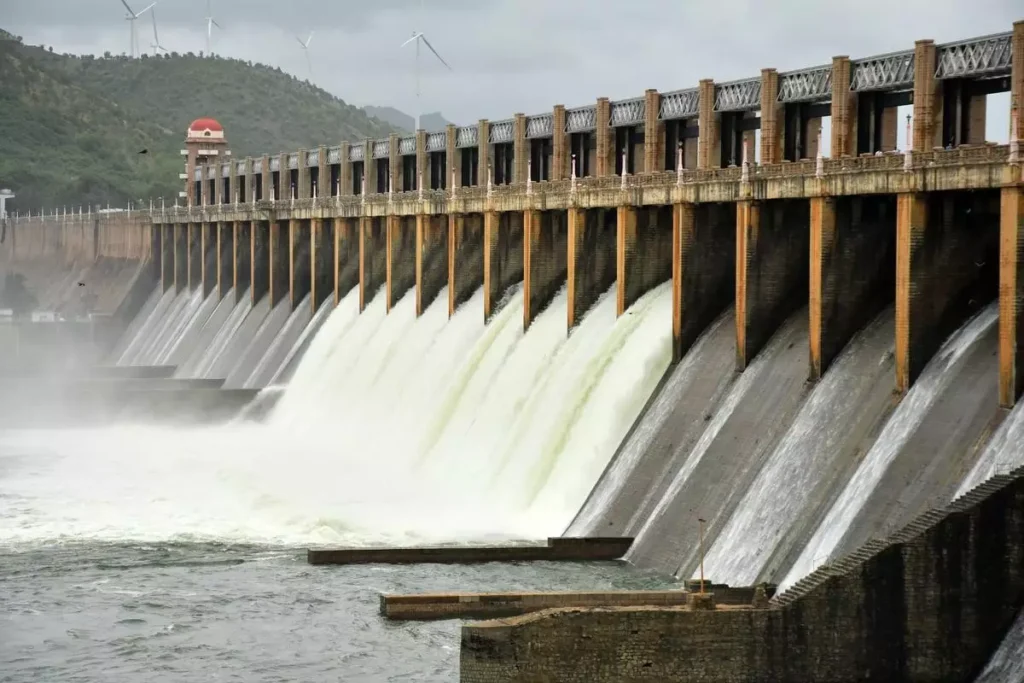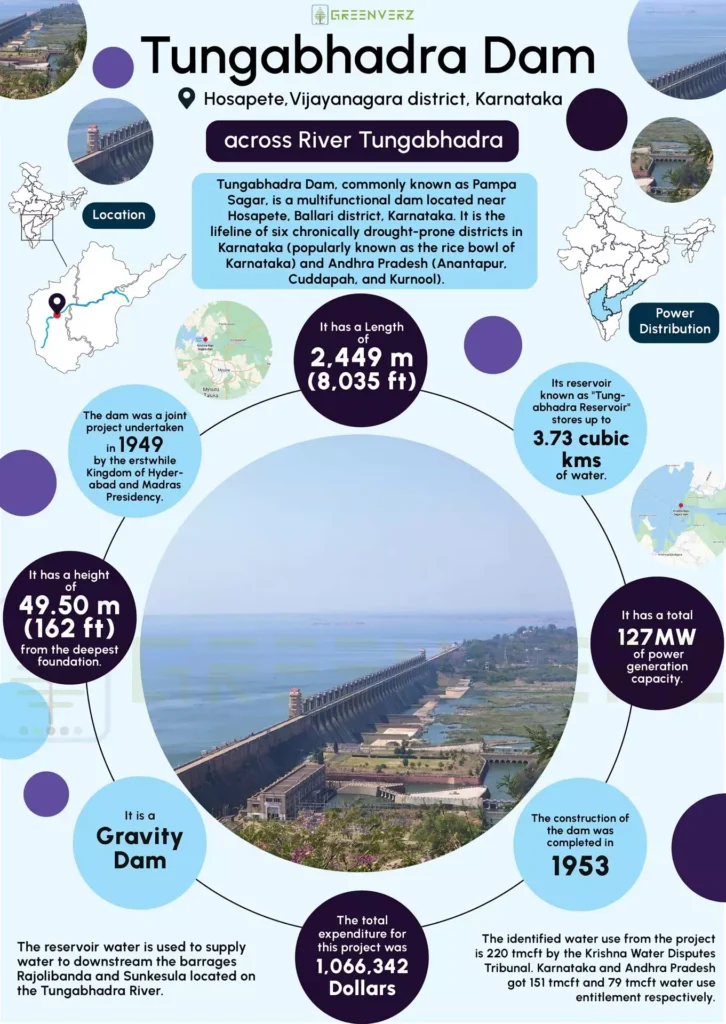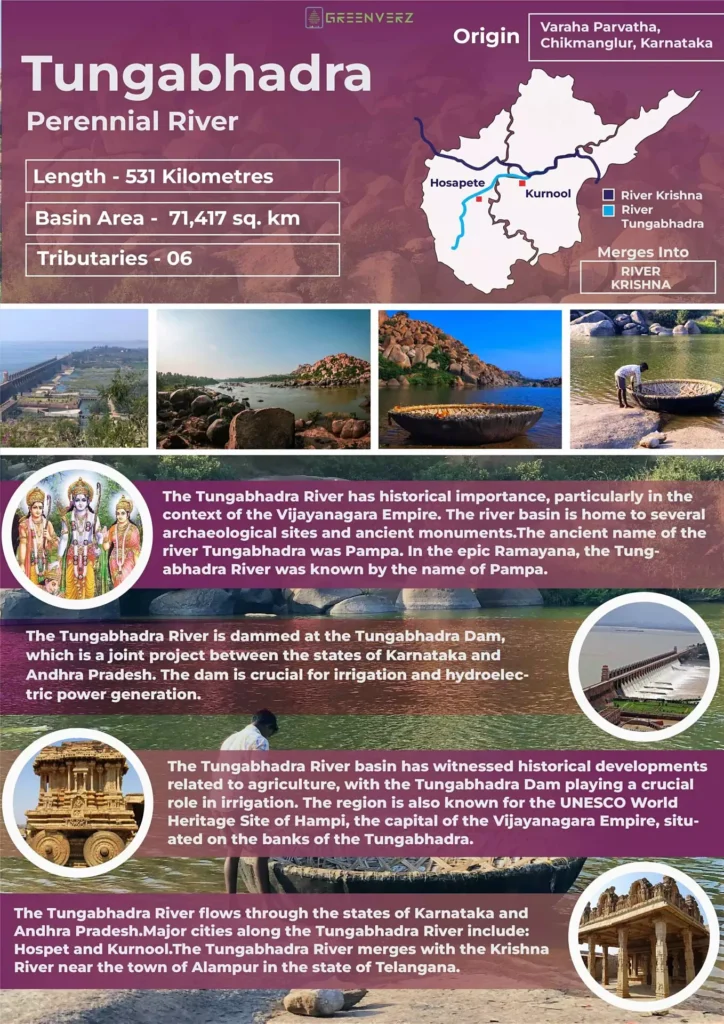Recently, the Tungabhadra Dam in Karnataka experienced a significant incident when one of its crest gates collapsed for the first time in its 70-year history, due to intense floodwaters and a broken chain link.
Function of Crest Gates:
- Also known as spillway gates, they manage overflow and reservoir water levels.
- Operated hydraulically, these gates use a bottom-hinged flap to control water levels and are effective in managing various materials, including ice.
About Tungabhadra Dam (Pampa Sagar):
- A multipurpose dam designed for irrigation, power generation, and flood control.
- Located across the Tungabhadra River, Karnataka.
- History: Conceived by a British engineer in 1860 and completed in 1953.
- Construction Leadership: The board of engineers for the dam’s construction was chaired by M. Visvesvaraya.
- Construction Materials: Built using mud and limestone, a unique combination for Indian reservoirs.
About Tungabhadra River
- Formation: Derived from the confluence of two streams, Tunga and Bhadra, which originate in the Western Ghats and merge near Shimoga.
- Tributary: It is a tributary of the Krishna River.
Dam Safety Concerns in India:
- Aging Infrastructure: 80% of large dams in India are over 25 years old.
- Challenges: Seismic vulnerability, excessive rainfall, and other structural issues pose risks.
Dams in India (National Register of Large Dams, 2023)
- Total Dams: 6,138 completed and operational dams.
- Large Dams: 234 dams are over 100 years old.
Dam Failure
- Definition: Failure refers to the collapse of part of a dam or its foundation, preventing it from retaining water.
- Historical Examples:
- Machchu Dam (Gujarat): Failure occurred in 1979.
- Tiware Dam (Maharashtra): Failure occurred in 2019.
Regulatory Measures:
- Dam Safety Act 2021 and Dam Rehabilitation and Improvement Project (DRIP) aim to address these concerns.
- Dam Health and Rehabilitation Monitoring Application (DHARMA) is a web-based tool for monitoring dam safety.
Ref: Source
| UPSC IAS Preparation Resources | |
| Current Affairs Analysis | Topperspedia |
| GS Shots | Simply Explained |
| Daily Flash Cards | Daily Quiz |
Frequently Asked Question:
How do crest gates function at the Tungabhadra Dam?
They manage overflow and reservoir water levels using a bottom-hinged flap.
What is the purpose of the Tungabhadra Dam?
It is designed for irrigation, power generation, and flood control.
Who was involved in the construction of the Tungabhadra Dam?
The board of engineers was chaired by M. Visvesvaraya.
What unique construction materials were used for the dam?
It was built using mud and limestone, a unique combination for Indian reservoirs.





